In this comprehensive guide, we’ll break down everything you need to know about Olympic vs. standard barbells for home use. Whether you're a beginner looking to start your fitness journey or a seasoned lifter considering upgrading your setup, this guide will help you make the best choice for your unique needs. We’ll cover the differences, benefits, drawbacks, and practical advice on how to choose the right barbell for your home gym setup.
Olympic Barbells vs. Standard Barbells: What's the Difference?
When choosing a barbell for home use, understanding the core differences between Olympic and standard barbells is essential. Let's dive into the key aspects that set these two apart, so you can make an informed decision.
1. Size and Length
One of the most noticeable differences between Olympic and standard barbells is their size.
- Olympic Barbells: Typically, an Olympic barbell is 7 feet (2.2 meters) long and weighs 44 pounds (20 kg). Olympic barbells are designed with heavy-duty construction to handle high loads, making them ideal for Olympic lifts such as the clean and jerk or the snatch.
- Standard Barbells: These are generally shorter, measuring about 5 to 6 feet in length and weighing between 15 to 25 pounds (7 to 11 kg). Standard barbells are lighter and better suited for moderate weight lifting, such as bicep curls and basic strength training exercises.
The extra length and weight capacity of Olympic barbells make them perfect for lifters who want to push their limits and engage in heavy lifting, whereas standard barbells are better suited for those looking for lighter weight training at home.
2. Diameter of the Sleeve
The sleeve is the part of the barbell where you load the weights, and its diameter is another defining characteristic.
- Olympic Barbells: Olympic barbells have a larger sleeve diameter, typically 2 inches (50mm). This allows them to fit Olympic-sized weight plates, which have a 2-inch hole in the center.
- Standard Barbells: Standard barbells have smaller sleeves, generally 1 inch (25mm) in diameter, and fit standard weight plates, which have a 1-inch hole in the center.
This size difference means that Olympic barbells require Olympic weight plates, which are generally thicker and more durable than standard plates. The larger sleeve diameter also provides better stability when lifting heavy loads.
3. Weight Capacity
The weight capacity of a barbell is another crucial factor to consider. Whether you're a casual lifter or a dedicated bodybuilder, the barbell you choose should be able to handle the amount of weight you plan to lift.
- Olympic Barbells: These barbells are built to handle much heavier loads, often rated for over 1,000 pounds. This makes them ideal for Olympic weightlifting, powerlifting, and heavy training.
- Standard Barbells: Standard barbells have a lower weight capacity, typically maxing out around 300 to 500 pounds, depending on the build. They’re perfect for those who don’t plan on lifting extremely heavy weights but still need a solid option for regular strength training.
If you plan on serious lifting or Olympic-style exercises, an Olympic barbell is the way to go. For lighter, general fitness routines, a standard barbell may suffice.
4. Durability and Construction
Durability is crucial when selecting a barbell for your home gym, especially if you plan on using it regularly.
- Olympic Barbells: Made from high-quality steel, Olympic barbells are designed to withstand the rigors of heavy lifting and intense training. Many Olympic barbells feature a chrome or stainless steel finish to protect against rust and wear.
- Standard Barbells: While standard barbells can also be durable, they are typically made from a lighter steel alloy and are less resilient than Olympic barbells. They’re still great for regular use, but may show wear and tear faster when used for heavy lifting.
For long-lasting durability and reliability, Olympic barbells take the lead.
5. Spin and Whip
If you plan to perform Olympic lifts, the “spin” and “whip” of the barbell become important factors to consider.
- Olympic Barbells: These barbells are designed to spin on their sleeves, allowing the bar to rotate when performing Olympic-style lifts. The spin helps reduce the risk of injury and allows for smoother movement during high-intensity lifts like the snatch and clean and jerk. Additionally, Olympic barbells have a certain level of “whip,” which refers to the flexing of the barbell under heavy load.
- Standard Barbells: Standard barbells do not spin as freely and lack the same level of whip. This can make them less ideal for performing explosive lifts, as the lack of spin can affect form and technique.
For Olympic-style lifting, the spin and whip of an Olympic barbell are crucial. However, if you're primarily focusing on exercises like squats, deadlifts, or bench presses, standard barbells can still get the job done.
Which Barbell is Best for Home Use?
Now that we’ve covered the key differences between Olympic and standard barbells, let's look at which one is better for home use based on your specific needs and goals.
1. Fitness Level and Goals
- Beginners and Casual Lifters: If you’re just starting your fitness journey and don’t anticipate lifting extremely heavy weights, a standard barbell may be sufficient. It’s perfect for individuals who want to build strength, tone muscles, and perform basic exercises like squats, bench presses, and deadlifts.
- Intermediate and Advanced Lifters: If you’re an intermediate or advanced lifter, or if you plan on performing Olympic lifts, you’ll benefit from the durability, weight capacity, and spin of an Olympic barbell. These are ideal for individuals who want to push their limits and engage in serious strength training.
2. Space and Storage
Another factor to consider when choosing between Olympic and standard barbells is the space available in your home gym.
- Olympic Barbells: Due to their larger size, Olympic barbells require more storage space. If you have a spacious home gym, they’re the best option for your training.
- Standard Barbells: Standard barbells take up less space, making them a great choice for smaller home gym setups.
3. Budget Considerations
While Olympic barbells are higher in quality and durability, they also come with a higher price tag. Standard barbells are generally more affordable, making them a better choice for those on a tighter budget. However, if you're committed to serious lifting and want to invest in equipment that will last, an Olympic barbell is worth the extra cost.
Research & Sources
To better understand the advantages of Olympic vs. standard barbells, it's essential to consider expert opinions and industry research.
According to a 2018 study by the National Strength and Conditioning Association, Olympic barbells offer superior performance and durability for athletes who perform high-intensity lifts. Additionally, Olympic-style lifting has been shown to improve power, explosiveness, and overall athleticism. On the other hand, a report from the American Council on Exercise highlights that standard barbells are sufficient for most people aiming to build general strength, muscle tone, and endurance.
By referencing these sources, it's clear that the choice between Olympic and standard barbells depends on your specific fitness goals, training regimen, and available space.
FAQ: Frequently Asked Questions
1. Can I use a standard barbell for Olympic lifting?
While it's possible to use a standard barbell for some Olympic lifts, the lack of spin and whip can hinder your performance. For optimal results and to reduce injury risk, an Olympic barbell is recommended.
2. Do I need to buy special weight plates for an Olympic barbell?
Yes, Olympic barbells require Olympic weight plates, which have a 2-inch hole in the center. These plates are designed to fit the larger sleeve diameter of Olympic barbells.
3. Is an Olympic barbell better for powerlifting?
For powerlifting, both Olympic and standard barbells can be used, but many lifters prefer the strength and durability of an Olympic barbell due to its ability to handle heavier loads and its higher weight capacity.
4. How do I maintain my barbell?
To maintain your barbell, make sure to store it in a dry place, clean it regularly with a cloth to remove dirt and sweat, and apply oil to the sleeves to prevent rusting. For Olympic barbells, be sure to rotate the sleeves to keep the spin functional.
Conclusion
Choosing between an Olympic and a standard barbell ultimately comes down to your fitness goals, space, and budget. Olympic barbells are ideal for advanced lifters, Olympic weightlifters, and those aiming to lift heavy weights with smooth, explosive movements. Standard barbells, on the other hand, are perfect for those looking to build strength and muscle with lighter, more affordable equipment.
At Hamilton Home Fitness, we pride ourselves on offering the highest quality barbells that cater to all fitness levels. Whether you’re just starting or looking to upgrade your home gym, we have the perfect barbell for you. Explore our collection today and experience the difference of premium equipment designed for durability, performance, and results.
Visit Hamilton Home Fitness to shop now!





